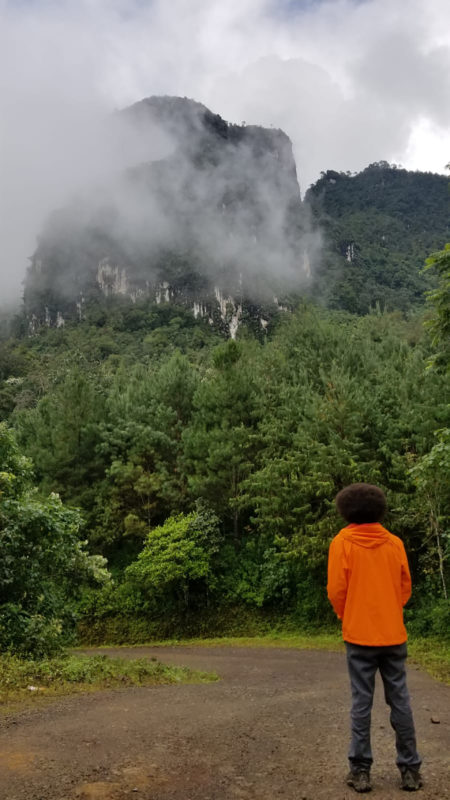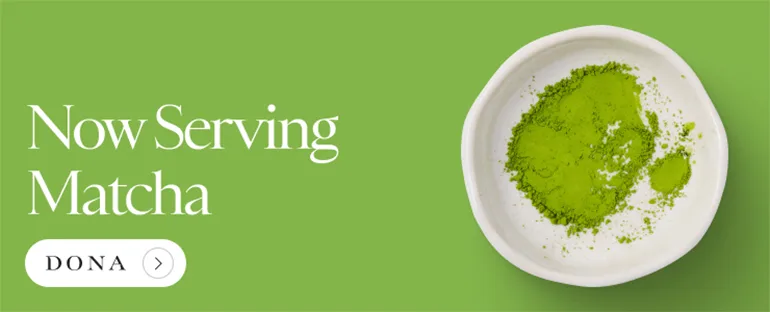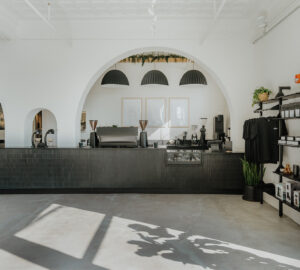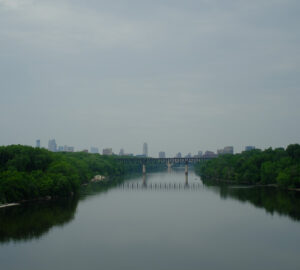Welcome to Roaster Spotlight, a new feature series on Sprudge dedicated to the art and science of coffee roasting, and the intrepid roasters who keep the flame. Roaster Spotlight on Sprudge is proudly presented in partnership with Mill City Roasters.
We’re living in the golden era of coffee roasters in America, a boom time for new brands and new ideas, a moment where nearly any cafe or coffee shop can put up their shingle and take on the roasting arts. Because of this it feels like the perfect time to kick off this new feature series, Roaster Spotlight, powered by our partners at Mill City Roasters, a brand based in Minneapolis, Minnesota. And who else to feature in our very first Roaster Spotlight story but the work of The Get Down Coffee Co., a success story in North Minneapolis with an intriguing and essential history.
The Get Down Coffee Co. is the work of Houston White, a North Minneapolis local with a broad entrepreneurial footprint, from apparel to community organizing to HWMR (Houston White Men’s Room), a barbershop that doubles as a cultural hub for the neighborhood. White has collaborated with Target, and The Get Down is itself a collaboration with Dogwood Coffee Company founder Dan Anderson.
Director of Coffee at The Get Down is CJ Porter Born, a Twin Cities kid who has found his calling as a coffee roaster. He’s a story within a story here at The Get Down, a brand we think is doing essential work right now out of Minneapolis. This interview with CJ Porter Born is inquisitive and compelling, and Porter Born has a unique outlook on the art of coffee roasting, the state of the industry, and where he and The Get Down are headed next. Settle in with a good cup of coffee for this one.
— Jordan Michelman
This interview has been gently edited and condensed.

As a roaster, what are you looking for in a good cup of coffee?
In a good cup of coffee, I look for a few different things. Understanding that different roasts and origins and processing methods produce different flavors, I have to first determine what I’m in the mood for. I absolutely love natural process coffees, and I’ve been very much enjoying trying out all the experimental fermentation lots that have become much more popular in recent years, but I also really love a classic washed coffee. I guess I just love all coffee! But I like to have a cup of coffee that has a well-defined flavor, whether that’s cocoa or roasted peanuts or raspberry or lime. I also really look for a well-balanced cup and a clean finish, regardless of origin or processing method. A cup that keeps me wanting to go back for another sip right away, and leaves a clean finish at the end. My current favorite is a washed Honduras.
What have been some surprising coffees to come across your cupping table?
Surprises coming across my cupping table. For some of the more surprising origins out there, I remember about four years ago I had my first ever cup of coffee from China. It was really good, very much reminded me of a South American coffee with the citrusy flavor notes, very light body, and a super clean finish. I believe we got a few bags of that at an auction at SCA Expo in Seattle one year. We also cupped some samples from Laos not too long ago, which was absolutely a first for me and really cool to see and try!

What are some of the challenges of roasting they don’t tell you about?
I would say the biggest one for me was learning more about this industry, and specifically this role in it (being a roaster). I wanted to take every opportunity I could to learn from people and improve my craft through knowledge gained from industry professionals. However, I was met with an unexpected amount of resistance from almost everyone I talked to. Nobody wanted to talk to me because I was viewed as competition, and the trade secrets needed to remain under lock and key. So it was incredibly difficult for me to find a starting point for improving myself as a roaster, until years of persistence and networking finally paid off. I would also say that a challenge I have is sometimes getting tunnel vision on one particular coffee that you wanted to bring a very specific flavor out of. If I cupped a sample that was super blackberry forward, and I can’t seem to quite replicate that on a production roast, it can become an unhealthy obsession that keeps me up at night. Fortunately, I have a network of coffee colleagues all around the country that I send samples to and ask for feedback on, and eventually the collective minds come to a reasonable solution. Or at least they make me feel better!
What are some of the best parts of roasting coffee?
The best part about roasting coffee, for me, has always been about the magic behind the scenes. If you think about green coffee as a canvas, you can quickly draw a comparison to an artist who paints. There are so many different directions you can take a coffee. Is it a single origin? A blend? For cold brew? The specific application of each coffee determines how you will roast it, but every roaster operates a little bit different. It’s pretty crazy to think about how you can have one coffee roasted by 10 different people and have it truly be 10 different coffees. In fact, we were a part of a Minnesota Roasted project where we did just that. We all got the same bag of Colombia from Cafe Imports, and roasted it our own ways. It was so much fun to see the wide range of flavors and the difference within each cup. I suppose that’s my long-winded way of saying I love how you can really do so many different things with a coffee that will be unique to your roast, and that often becomes what I call your “roast signature” that people will begin to notice and follow over the years.

What’s your approach to blending?
When I’m approaching a blend, I think of a few different things: application, longevity, and sustainability. But above all else, I want to build a blend around a flavor profile, and I can work backwards from there. For application, how is it going to be used? I would create a different blend for a cold brew than I would for a batch brew or espresso. Or if I want one that’s going to be versatile across multiple applications, that’s also going to change how I structure a blend. I then consider the longevity of the blend. If it’s going to be one I offer always or long-term, I will source green differently than if it’s a limited-run blend. For longer term blends you want to think more generalized flavor profiles. Like “citrus” instead of something specific like “key lime,” to give yourself some wiggle room when you need to swap out origins. And that ties right into the sustainability piece of it where sourcing is concerned. If it’s a limited edition “top shelf” type of thing, the prices aren’t as much of a focal point. But when you’re thinking about contracting out 20+ bags of coffee, the difference between $4.05 per pound and $6.50 per pound really adds up quick. So all of those factors come into play, but it’s all about how you want it to taste first, and then working back through those other steps from there.
How does technology help your work as a roaster? What tools do you use?
As a roaster, technology is my friend! So many tools and devices and programs have helped me understand the science of roasting, how to apply theories, how to evaluate roast samples, and how to make adjustments on the next roast. The biggest one is roaster profiling software. I use Cropster, and it makes everything so much easier for me. You are able to create a profile and write notes at different stages (gas pressure increase or decrease, drum speed change, airflow change, first crack, etc.) so you can have a visual, saved reference when you’re sampling your coffee. If you want to be able to draw a flavor out or remove some kind of roasty flavor from the cup’s finish, you can use that profile to see what you did, and better understand what to change for the next batch to reach the desired effect. But everything from Agtron color evaluation to moisture content readers have helped me over the last decade to better understand this industry and become a better roaster.

We know a lot of roasters who LOVE to listen to podcasts or music while they’re manning the machine. What do you like to listen to?
I pretty much constantly listen to music. When I’m driving, when I’m cooking, when I’m cleaning, and when I’m roasting. Most of my music is in the Hip Hop realm, but I’ve got a ton of R&B stuff as well. Anthony Hamilton is one of my all time favorites. Friday mornings are usually good days to blow through the new release albums during the roast day, but I also have a bunch of playlists based on mood. Some of current favorite artists are 6LACK, Tobe Nwigwe, Conway The Machine (and the whole Griselda squad), Mark Battles, Freddie Gibbs, Saint JHN, the list goes on and on. But music has always been a huge part of my life, and I’m almost constantly listening to music whenever possible. I honestly believe it makes the beans taste better when they’re roasted to a curated playlist. You can taste the good vibes!
What’s your favorite coffee growing region to visit?
I have been fortunate enough to travel to four different countries on origin trips so far (with many more planned), but the one I would have to call my favorite is Honduras. A lot of things factor into that decision too. First, I didn’t know much about Honduras as a country or as a coffee origin, since I had seen very little Honduran coffee come across my cupping table. So this was a whole new experience for me that I was super excited to dive into and explore. The hospitality I experienced in Honduras was also second to none. The warm welcomes, the pride of the coffee farmers, the willingness of people in the towns we passed to talk with us and show us around. It was beautiful. Such a diverse landscape between the main cities and the mountains where the coffee grows, delicious fruit, delicious food, and good vibes all around! I also remember one of my happiest moments on a mountain top in Honduras in front of a bonfire under the most stars I had ever seen in the sky before. Local beer, grilled meat, great company. That was about 10 days before the first pandemic lockdown hit Minnesota (this night was March 5th, 2020) and that moment will live with me forever. Honduras will always have a very special place in my heart.

What is your easiest origin or variety to roast? what is your hardest and why?
This is a great question, and one I’d love to start asking more of my colleagues! I would say my easiest (or the one I feel I do best) is Mexico. The reason is this has been my favorite origin for a long time, and after my trip to Oaxaca I gained even more appreciation for it. I feel like it’s the origin I understand the most, because it’s the one I got the most excited about as a young coffee roaster and kind of defaulted to right away as a showcase roast. On the flip side, I would say I have the hardest time with Sumatra as a general origin. The reason on that being not only less interaction with it over the years, but something about the baseline flavor notes of Sumatran coffees have always been harder for me to lock in than other origins. And I do love a good cup of Sumatra! I really enjoy the earthy/sweet pepper flavors I get from a lot of Sumatran coffees, but I feel like I always have a tougher time refining that and developing the sweetness. It could also be in my head, but I always feel like Sumatra tends to need a little more heat in the beginning of the roast but then suddenly takes off, leaving me much less control in the development phase. I also preface this with I know TONS of talented roasters that have roasted top tier Sumatras, so this is absolutely just me not having enough practice or confidence with this particular origin!
What expectations did you have when you started roasting and how has your experience met or changed those expectations?
My expectations as a young coffee roaster were ambitious, I wanted to be a part of something that had captivated me, and do something meaningful with my time here. It was always hard for me to find my place in the world (socially, with school, racial identity, etc.) but I quickly found my second home at my neighborhood coffee shop. That piece is one I have always tried to keep in my line of sight as a priority to expand on. If you had met me as a teenager, you would likely not be able to recognize me as I am now, and I was not in a place mentally or physically where I could think about any kind of constructive outlet for everything I had been feeling at that time.
Coffee gave me a home, a job, a hobby, a career, and finally a community. It took a lot of work to get here, and a lot of rejections and doors slammed shut, but I didn’t let myself give up on something that (even then) I knew I was supposed to be doing. And since I set such ambitious goals for myself, I kept moving forward towards them and didn’t sweat the little things nearly as much. Today, I have friends and colleagues all around the world. I have been to origin in four different countries. I have participated in several fundraisers and auctions for farmers at origin. And as a person of color, I’m in a position now where I can start to advocate for more representation in the industry with an actual platform to speak on. It’s a beautiful thing, and I get emotional thinking about it. Coffee has changed my life, made me the best version of myself I could ever hope to be and gives me the ability to go out into the world and leave a positive impact on other people’s lives. I want to help make the world a better place, one cup of coffee at a time.

What do you wish you could do more of if your market allowed it?
I would love to see way more roasters do collaborations with one another!!! This has been a passion project of mine, trying to get roasters to come together and work together on things (sharing equipment, trading coffees to sample, having a regular rotation of people you send sample roasts to for cupping evaluation) but the industry is, for the most part, a little hesitant to do that. I use the beer world as a prime example, you see a HUGE collaborative mentality amongst brewers. Constantly doing beer collaborations, guest brewing spots, ingredient and equipment sharing (especially during the first year of COVID). It’s truly better for everyone the more we all work together, but that just doesn’t happen all that often in coffee. When I first started out, nobody wanted to talk to me about anything. Nobody responded to my offers to buy them lunch and pick their brain, or shadowing, or apprenticing (working for free to gain knowledge and experience). Though the industry has loosened up on that a little bit, it can still be so much better. I have been fortunate enough to do about four collaboration roasts with local coffee roasters (shoutout to my guys Rob and Jeff at Folly Coffee), and those are always so much fun. I feel like I’m a better roaster when I can work with other roasters and learn from their experiences, and hopefully share some of my own as well. So I would love to see way more collaborations in the future, and I’m quite confident we’ll get there soon!
Where do you roast? Can you tell me about the physical space and why you have it set up that way?
Our roastery is in Northeast Minneapolis, and we just put in a brand new Mill City 20k roaster! It’s been a long time coming, but we finally got our space secured and built out. This is also a first for me, the first time in over a decade roasting that I’ll be using a brand new, fresh out of the box machine. I’m really excited to dive in, create my own PM schedule, truly feel ownership of a machine from beginning to end. Our roastery/production area is set in a space where we have a 3/4 wall dividing the space in half. One half is the roaster, my desk, the sample roaster, the green coffee bins, and some pallet racks. Along the wall that the two sides share we have out weigh and fill machine, heat sealer, production counter, bags/stickers, shipping area, and all the boxes we use. On the other side of the wall there is a little meeting/cupping area with some additional green coffee and perch storage. We are still getting moved in and settling into our space as I write this, but we’re very much thinking about her flow from green coffee to fully roasted and bagged and shipped, trying to make the most efficient and seamless workflow we possibly can. I will also be doing my coffee education classes in the cupping area as well, which will allow me to do many more classes much more frequently. The new space is coming together more and more every day, and the future is looking bright for The Get Down!
Thank you so much.
This story appears as part of Roaster Spotlight, a new feature series on Sprudge dedicated to the art and science of coffee roasting, and the intrepid roasters who keep the flame. Roaster Spotlight on Sprudge is proudly presented in partnership with Mill City Roasters.
Jordan Michelman (@suitcasewine) is a co-founder at Sprudge Media Network, and a James Beard Award winning journalist.






























